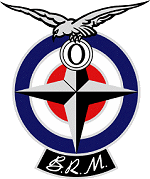
British Racing Motors (BRM) was a British Formula One motor racing team. Founded in 1945 and based in the market town of Bourne in Lincolnshire, it participated from 1951 to 1977, competing in 197 grands prix and winning seventeen. BRM won the constructors' title in 1962 when its driver Graham Hill became world champion. In 1963, 1964, 1965 and 1971, BRM came second in the constructors' competition.

The 1968 Formula One season was the 22nd season of the FIA's Formula One motor racing. It featured the 19th World Championship of Drivers, the 11th International Cup for F1 Manufacturers, and three non-championship races open to Formula One cars. The World Championship was contested over twelve races between 1 January and 3 November 1968.
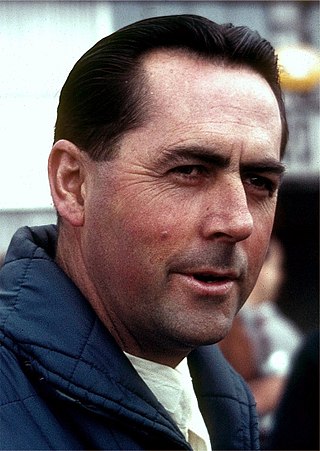
The 1966 Formula One season was the 20th season of FIA Formula One motor racing. It featured the 17th World Championship of Drivers, the 9th International Cup for F1 Manufacturers, and four non-championship races open to Formula One cars. The World Championship was contested over nine races between 22 May and 23 October 1966.
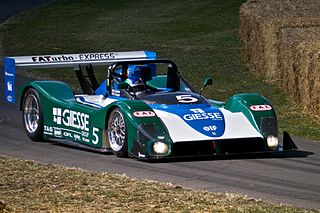
The Ferrari 333 SP is a sports prototype race car designed by Ferrari that was built by Italian race car manufacturer Dallara and later Michelotto to compete in the World Sports Car championship for Ferrari. Unveiled at the end of 1993, at the behest of amateur racer Giampiero Moretti, the 333 SP marked Ferrari's official return to sports car racing after a 20-year absence. The car was built to compete in the IMSA's new WSC class, which replaced the previous GTP cars.

The 1992 24 Hours of Le Mans was the 60th Grand Prix of Endurance, taking place at the Circuit de la Sarthe, France, on the 20 and 21 June 1992. It was also the third round of the 1992 FIA Sportscar World Championship season. The FIA was struggling to assemble sufficient cars for the race, and so the entry-list was extended to include the older Group C cars and national trophy cars. The 28 starters was the lowest since the 1932 race. With the withdrawal of the Jaguar and Mercedes-Benz teams, it looked to be a Peugeot vs Toyota contest, each with very strong driver combinations, with the new Mazdas there waiting for any slip-ups. There were still considerable concerns that the 3.5-litre engines derived from Formula 1 could not last the distance. It was Philippe Alliot who took pole position for Peugeot, in a blistering lap fully five seconds faster than the lap record, with teammate Dalmas second.

The Toyota TS010 was a Group C racing car built by Toyota for the Sportscar World Championship, All Japan Sports Prototype Championship, and the 24 Hours of Le Mans.
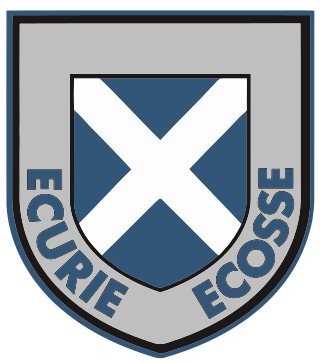
Écurie Écosse was a motor racing team from Edinburgh, Scotland. The team was founded in November 1951 by Edinburgh businessman and racing driver David Murray and mechanic Wilkie Wilkinson. Its most notable achievement was winning the 1956 and the 1957 24 Hours of Le Mans. The team also raced in three Formula One races. Ecurie Ecosse's cars were always distinctive in their flag blue metallic paint.
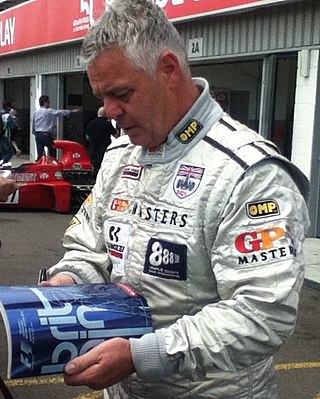
The 1992 Sportscar World Championship season was the 40th and final season of FIA World Sportscar Championship motor racing. It featured the 1992 FIA Sportscar World Championship, which was contested over a six race series which ran from 26 April to 18 October 1992. The championship was open to Group C Sportscars.

The Eagle Mk1, commonly referred to as the Eagle T1G, was a Formula One racing car, designed by Len Terry for Dan Gurney's Anglo American Racers team. The Eagle, introduced for the start of the 1966 Formula One season, is often regarded as being one of the most beautiful Grand Prix cars ever raced at the top levels of international motorsport. Initially appearing with a 2.7L Coventry Climax inline 4-cylinder engine, the car was designed around a 3.0L Gurney-Weslake V12 which was introduced after its first four races. In the hands of team boss Gurney, the Eagle-Weslake won the 1967 Belgian Grand Prix, making Dan Gurney only the second driver at the time, and one of only three to date, to win a Formula One Grand Prix in a car of their own construction. Excluding the Indianapolis 500, that win in Belgium still stands as the only win for a USA-built car as well as one of only two wins of an American-licensed constructor in Formula One. It was also the first win for an American constructor in a Grand Prix race since the Jimmy Murphy's triumph with Duesenberg at the 1921 French Grand Prix.

The BMW V12 LM was a racing car built for sports car racing in 1998. The car was built using a combination of WilliamsF1 chassis engineering and construction and a BMW powerplant. The car was a predecessor to the BMW V12 LMR, which debuted in 1999.

Spice Engineering was a British racing team founded by driver Gordon Spice with Raymond Bellm in the early 1980s, later becoming a successful sports car constructor in 1986. They competed in the World Sportscar Championship in Europe as well as the IMSA GT Championship in North America, at times partnering with major manufacturers such as General Motors and Honda as well as race engine manufacturer Comptech.
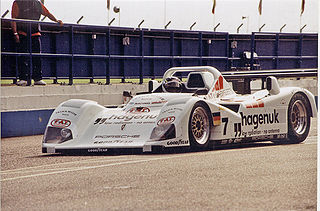
The Porsche WSC-95 was a Le Mans Prototype originally built by Tom Walkinshaw Racing. It was modified by Porsche from the original Group C Jaguar XJR-14 from which it derived, and run by Joest Racing. Originally intended to race in the IMSA World Sportscar Championship, the WSC-95 saw very little race action even though it won the 24 Hours of Le Mans in both 1996 and 1997 without being acknowledged as a factory supported project. It was later upgraded to the Porsche LMP1-98 before being retired. Only two cars were ever built.
The Panoz LMP07 was a Le Mans prototype built in late 2000 for Panoz for competition in the American Le Mans Series. The car was designed as a successor to the Panoz LMP-1 Roadster-S which had competed since 1999. Although retaining the unusual format of having the engine in front of the cockpit, the LMP07 was quickly found to be lacking the capabilities of its predecessor, forcing Panoz to abandon it and return to the LMP-1 Roadster-S. The LMP07 would survive in the hands of privateers until 2003.
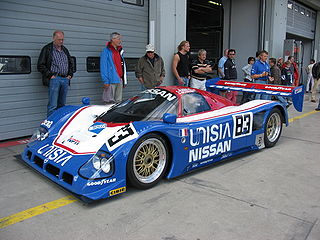
The Nissan R90C was a platform used for Group C racing cars built in 1990 by Nissan Motors for competition in World Sportscar Championship (WSC) based in Europe and the All Japan Sports Prototype Championship (JSPC). The cars based on the basic R90C platform would compete until 1993 before Nissan chose to withdraw from sports car racing, not returning until 1997. It won three JSPC championships and several significant endurance races during its career.
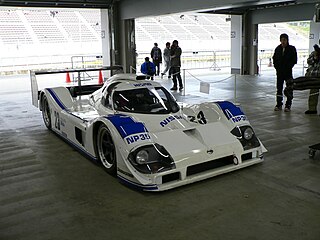
The Nissan P35 was a planned Group C car built by Nissan Motors for competition in the World Sportscar Championship. Developed by Nissan Performance Technology Inc. (NPTI), which had formerly raced under the name Electramotive in the United States, the cars were intended to be completed by the middle of 1992, with competition starting in 1993. However economic troubles for Nissan led to the cancellation of the project soon after testing of the first cars had begun, meaning that the P35s never raced.

The Debora LMP296 was a Le Mans Prototype, built by Debora Automobiles in 1996 for use in the 24 Hours of Le Mans. The car was originally entered with a 2-litre turbocharged Cosworth straight-four engine, but several other engines were used in the car's three-year career. Two cars are known to have been built. In conjunction with the LMP297, the car helped Waterair Sport to the International Sports Racing Series SR2 Team's Championship in 1998. The LMP296 was updated into the LMP299 for 2000.

The BRM P83 was a Formula One racing car designed by Tony Rudd and Geoff Johnson and built by British Racing Motors for the new engine regulations of 1966. It used a highly unorthodox H16 engine which caused problems throughout the car's racing life, and despite the best efforts of Graham Hill and Jackie Stewart took BRM from championship contenders to also-rans, leading it to be regarded alongside the BRM Type 15 as another embarrassing failure for the British marque caused by overcomplicated engineering.
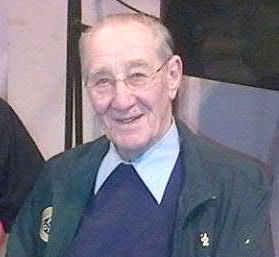
Leonard E. Terry was an English racing car designer and engineer, known for his work with Lotus, BRM and Eagle. He also designed chassis for many other teams, including ERA and Aston Martin and produced his own car in which he competed.
Weslake V12 engine refers to two families of naturally-aspirated, four-stroke, 60° V12 racing engines, both initially designed by Weslake and produced and developed by Weslake and others between 1966 and 1992. The engines were raced in Formula One (F1) and sports car endurance racing, while various plans for Weslake V12-powered road cars all came to nothing.

The Maxton Rollerskate is an American sports roadster built in the early 1990s. It is powered by a Mazda rotary engine. Just over 50 examples were produced at the factory in Colorado.

















